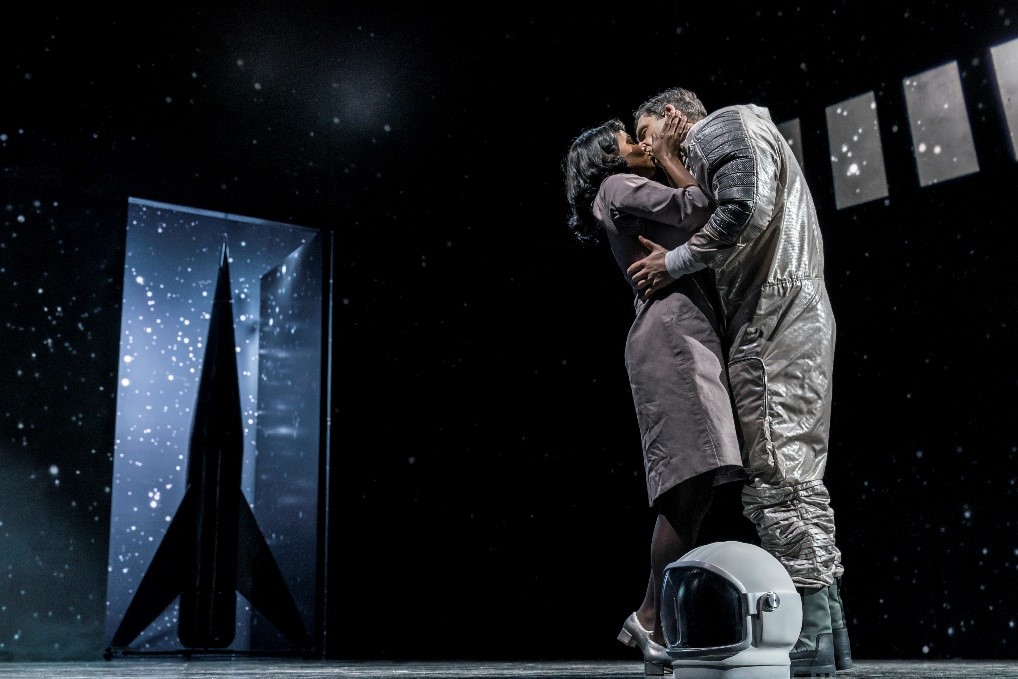Science Fiction is often held as a lesser form of literature. Perhaps because it is so grounded in the ‘Dimension of Imagination’, a term coined by Rod Serling the creator of the seminal science fiction TV series, ‘The Twilight Zone’.
Yet we should ask ourselves who really sent the first humans to the moon; was it the work of the extensive team of NASA scientists behind one of our species’ most inspirational achievements, or the seed planted by Jules Verne in his 1865 novel ‘From the Earth to the Moon’ which is known to have been an influence to both Astronaut and Cosmonaut alike in the Space Race of the 1960s?

© CBS Broadcasting Inc.
Science can determine the “how”. It’s a land grab for knowledge by which we seek a better and, perhaps one day, complete understanding of the universe. However, science rarely can deliver the “why?” The unsatisfying response of; “because we can” is not enough.
Humanity cannot advance as a species through science alone. We need to assess the impact on the adventure of each and every step we take. We must consider both the blue sky and the clouds on the horizon.
The potential hazards of our own creations have been explored as far back as Mary Shelley in her ‘Frankenstein‘ (1818) through to the countless dystopian scenarios currently on offer (why not take your pick from a fine selection of doomsday scenarios?). It’s often those unshackled by scientific discipline that arrive at the consequences faster than the scientific pioneers breaking new ground.

It’s not that Science Fiction authors are Luddites – far from it. Writers such as Ursula Le Guin wrote powerfully about the utopian potential of “new technology”.
Indeed, many a scientist has a proven command of the imagination such as Isaac Asimov (who held a Ph.D. in chemistry), Arthur C. Clarke (in 1945, he proposed that geostationary satellites would be ideal for telecommunications relays), Michael Crichton, Robert A. Heinlein, Fred Hoyle and Carl Sagan all of whom had strong academic credentials and conducted research often in parallel with their creative work.

The work of Science Fiction authors continues to win the respect it deserves, as recognised when Octavia Butler became the first Science Fiction author to win a MacArthur ‘Genius Grant’ in 1995.
Science Fiction can offer direction – targets to aim for by scientists, be that the conquest of space or the creation of all our mod cons. Motorola’s Martin Cooper led the team that developed the world’s first handheld 800 MHz mobile phone prototype in 1973. Cooper later admitted that watching Captain Kirk using his communicator on ‘Star Trek’ inspired him.

Perhaps more importantly, the genre also serves as our very own “Jiminy Cricket”. It is the health warning on the side of the very packet that scientific research comes in. A moral compass to be ignored at our peril. Case in point, the consequences of Artificial Intelligence as explored half a century ago by Clark and Stanley Kubrick in ‘2001: A Space Odyssey‘ (1968).
Like Shelley’s ‘Frankenstein’ 150 years earlier, the HAL 9000 highlights man’s hubris in creating Artificial Intelligence whilst our species still has a primitive understanding of its own.
The imagination is a realm as important to explore and understand as the “final frontier” or deep sea exploration. It’s an essential part of our existence, of our physiological and psychological make up…and just why we were designed with that capacity is insoluble to man or machine. At least right now.

And that brings us to ‘The Twilight Zone’, now in its 60th year with the acclaimed stage production currently playing at London’s Ambassador’s Theatre until 1 June. It remains perhaps the most influential TV series in American history – continuing to inspire the great and good in literature, film, TV and now stage.
The new stage production celebrates the pioneering work of Serling, the show’s creator and host, as well as two of his closest collaborators, Richard Matheson and Charles Beaumont. It brings together director Richard Jones (the recent recipient of his 8th Olivier Award) with New York playwright Anne Washburn. Even the use of magic and illusion in the show calls on the scientific mind with Richard Wiseman (who holds a Professorship in the Public Understanding of Psychology at the University of Hertfordshire) and Will Houstoun providing their skills to make the impossible probable.
The show offers daily departures right into the epicenter of the imagination (well except for Sundays). Just make sure you get yourself a return ticket.
The Twilight Zone is showing at the Ambassadors Theatre until 1 June.
